Physical Address
304 North Cardinal St.
Dorchester Center, MA 02124
Physical Address
304 North Cardinal St.
Dorchester Center, MA 02124
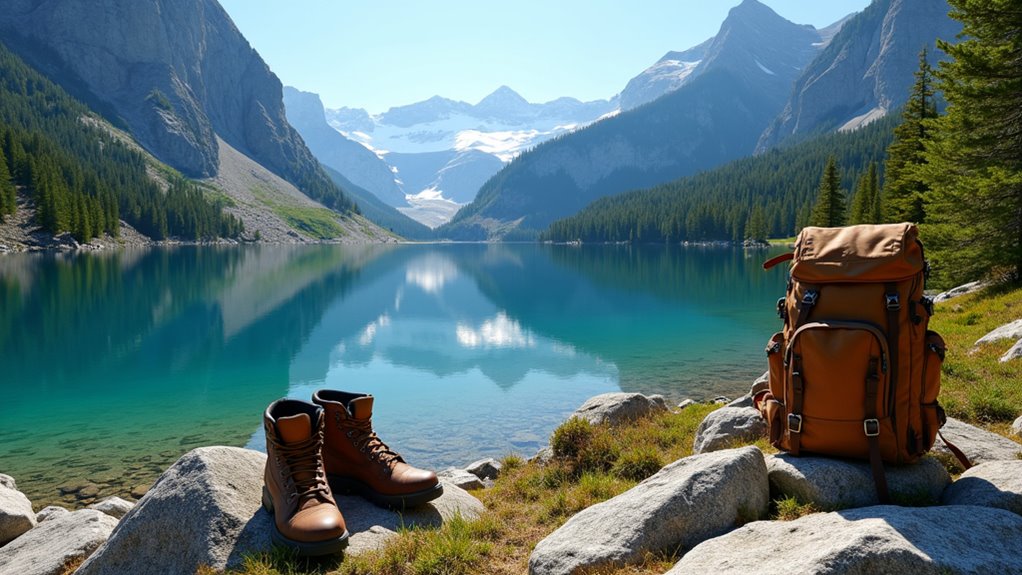
Journey beyond Europe's crowded tourist traps to discover hidden alpine trails and ancient paths where authentic cultural encounters await.
While most travelers rush through Europe’s cities checking off tourist attractions, you’ll discover the continent’s true soul emerges along its ancient trails and mountain paths. Europe’s hiking destinations offer something beyond mere exercise—they’re gateways to cultural encounters that hotels and tour buses simply can’t provide. From sharing stories with fellow pilgrims on Spanish routes to stumbling upon family-run mountain huts in the Alps, these trails hold secrets that transform ordinary vacations into something far more meaningful.
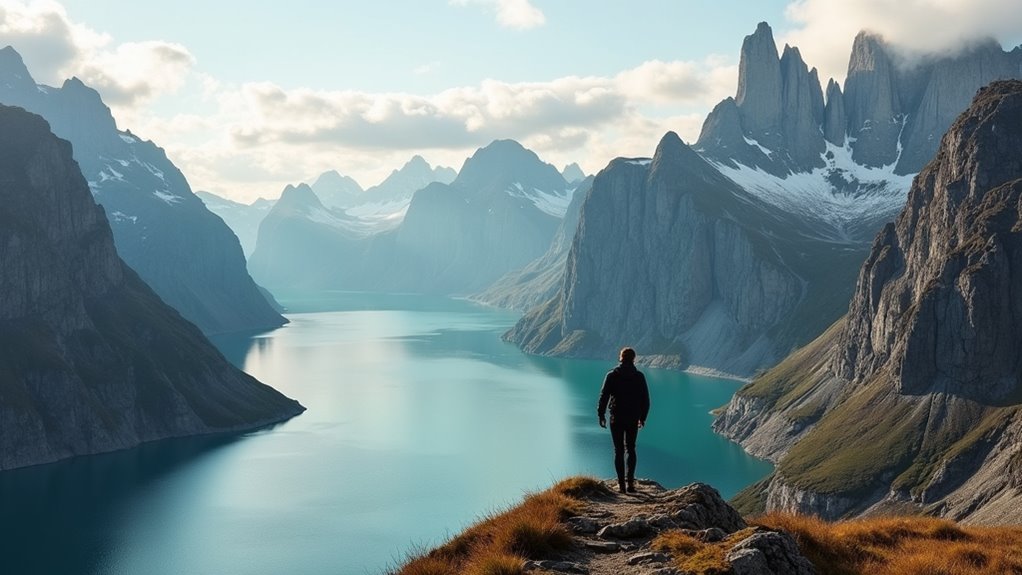
Rising dramatically from the Norwegian Sea above the Arctic Circle, Norway’s Lofoten Islands offer some of Europe’s most breathtaking hiking terrain. You’ll discover jagged peaks plunging into crystal-clear fjords, creating a landscape that feels almost otherworldly.
Jagged Arctic peaks plunge into pristine fjords, creating an otherworldly hiking paradise that defines Norway’s dramatic northern wilderness.
The islands’ compact size means you can experience diverse terrain within short distances—from coastal walks to challenging mountain ascents.
Plan your visit between May and September when daylight extends well into the night, giving you extra hiking hours. You’ll find well-marked trails leading to iconic peaks like Reinebringen and Kvalvika Beach.
Don’t expect luxury amenities; instead, embrace the rugged simplicity that defines Norwegian outdoor culture. Pack layers for unpredictable weather, and consider staying in traditional rorbuer (fishermen’s cabins) for an authentic Arctic experience.
For those seeking even more challenging adventures, consider exploring the US, which offers exceptional glacier climbing opportunities on some of the world’s most spectacular ice formations.
While Norway’s Arctic wilderness offers raw, untamed beauty, Italy’s Cinque Terre presents a completely different hiking experience where centuries of human craftsmanship blend seamlessly with coastal splendor.
You’ll traverse the famous Sentiero Azzurro connecting five colorful villages perched on Mediterranean cliffs. The trail winds through terraced vineyards producing local wine, past ancient stone walls built by generations of farmers. Start early to avoid crowds and intense midday heat.
Each village offers distinct character—Monterosso’s beaches, Vernazza’s harbor charm, Corniglia’s hilltop views, Manarola’s romantic sunsets, and Riomaggiore’s dramatic coastline. Pack water and wear sturdy shoes; some sections are steep and rocky.
Stop frequently to sample fresh seafood, especially anchovies and pesto. The trail requires moderate fitness, but rewards you with postcard-perfect views at every turn.
For those seeking additional adventure beyond hiking, the area’s dramatic cliffs also provide excellent opportunities for rock climbing enthusiasts looking to combine multiple outdoor activities during their camping trip.
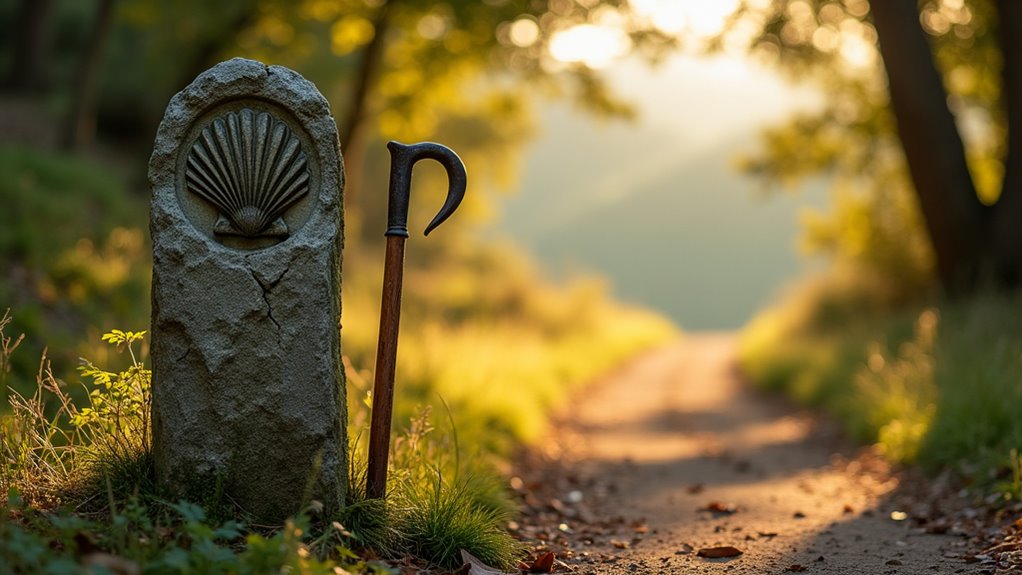
The Camino de Santiago transforms hiking into something deeper—a thousand-year-old pilgrimage that’s drawn everyone from medieval kings to modern backpackers seeking purpose on Spain’s ancient trails.
You’ll discover multiple routes leading to Santiago de Compostela, but the French Way remains most popular. This 500-mile journey takes 4-6 weeks, though you can tackle shorter sections.
Yellow arrows and scallop shells guide your path through rolling hills, medieval towns, and Gothic cathedrals.
Pack light—albergues (pilgrim hostels) provide beds for €10-15 nightly. You’ll meet fellow walkers from worldwide, sharing meals and stories.
Don’t expect luxury; expect transformation. The Camino strips away distractions, leaving you with blistered feet, incredible sunsets, and perspectives you’d never find elsewhere.
Just like choosing between renting or buying a boat for fishing adventures, you can rent quality hiking gear in major towns along the route rather than purchasing everything new for your pilgrimage.
When mist rolls across Scotland’s Highlands, you’ll understand why this landscape has inspired centuries of legends and lured hikers into its wild embrace.
You’ll traverse terrain shaped by ancient glaciers, where towering peaks like Ben Nevis challenge experienced climbers while gentler paths welcome casual walkers.
The West Highland Way offers Scotland’s most famous long-distance trek, stretching 96 miles from Glasgow to Fort William. You’ll pass shimmering lochs, historic battlefields, and remnants of Highland clans’ turbulent past.
Pack waterproof gear—Scottish weather changes rapidly, and you don’t want soggy boots dampening your adventure.
Local hospitality shines in Highland villages, where pub conversations flow as freely as single malt whisky. You’ll discover that Scots genuinely love sharing stories about their rugged homeland’s folklore and natural wonders.
This remarkable trail has earned recognition as one of the world’s best hikes, attracting adventurers from across the globe to experience Scotland’s raw natural beauty.
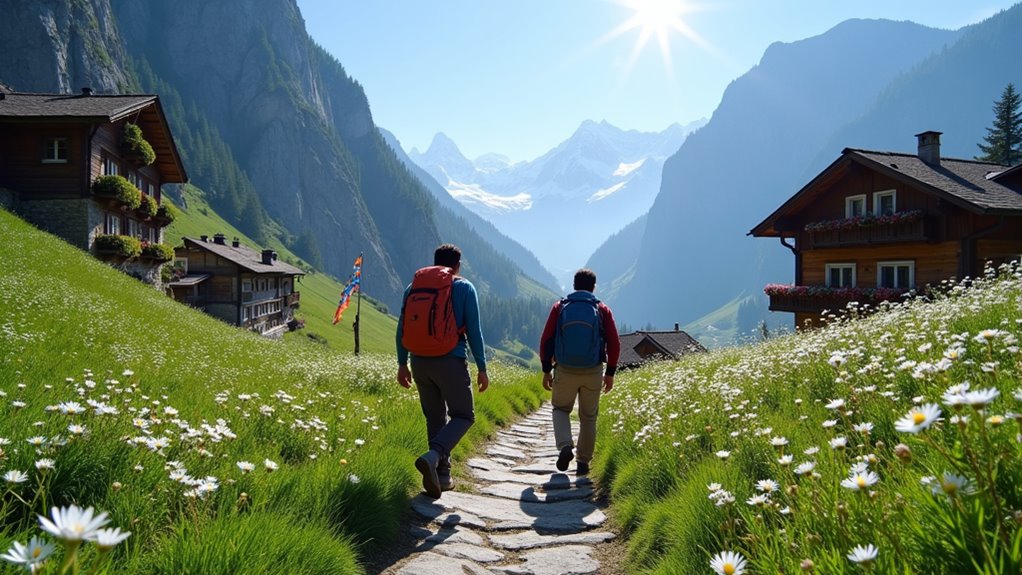
As you ascend into the Swiss and Austrian Alps, crystalline air fills your lungs while meticulously maintained trails guide you through Europe’s most iconic mountain scenery. You’ll discover Switzerland’s legendary efficiency extends beyond trains to hiking infrastructure—every path’s perfectly marked with yellow signs indicating destinations and walking times.
Austria offers equally stunning routes with gemütlichkeit culture, where mountain huts serve hearty schnitzel and local beer.
Don’t miss Switzerland’s Eiger Trail or Austria’s Eagle Walk for breathtaking panoramas. You’ll encounter centuries-old traditions: cowbells echoing across meadows, traditional Alpine architecture, and locals speaking multiple dialects.
Pack layers—weather changes rapidly at altitude. Both countries’ public transport seamlessly connects trailheads, making car-free hiking adventures entirely feasible while enjoying authentic Alpine hospitality. When planning overnight adventures, consider the various camping tents designed specifically for mountain conditions to enhance your Alpine experience.
Stretching 180 kilometers across Corsica’s rugged spine, the GR20 will test every fiber of your hiking ability with its relentless combination of granite scrambles, exposed ridgelines, and technical terrain that demands both physical endurance and mental fortitude.
The GR20 unleashes 180 kilometers of granite scrambles and exposed ridgelines that will push your hiking limits to the breaking point.
You’ll need 15 days to complete this beast, though most hikers tackle shorter sections.
Pack light but smart—you’ll carry everything on your back between mountain refuges. The trail’s notorious for its chain-assisted climbs and loose scree that’ll humble even experienced mountaineers.
Weather changes rapidly, so waterproof gear‘s essential.
Corsican culture shines in the refuges where you’ll share meals with fellow adventurers. Book accommodations early, especially for summer months.
This isn’t just hiking—it’s mountaineering disguised as a walking trail.
The GR20 consistently ranks among the world’s best hikes for its uncompromising difficulty and spectacular alpine scenery.
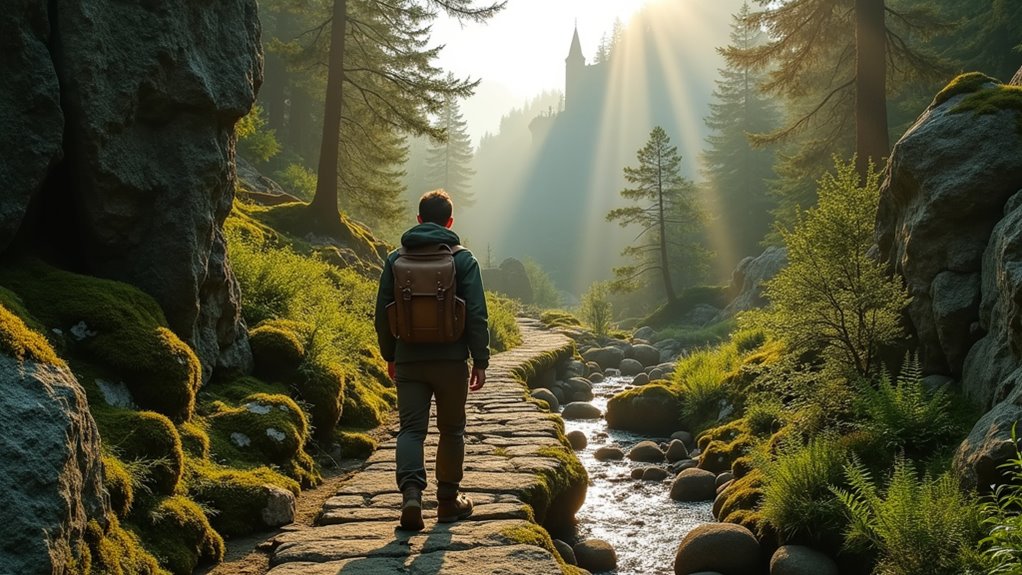
While Corsica demands technical prowess, Romania’s Carpathian Mountains offer a completely different adventure—one where Gothic castles emerge from mist-shrouded valleys and brown bears still roam ancient forests.
You’ll discover trails that weave past Bran Castle and through the Piatra Craiului National Park, where limestone peaks create dramatic silhouettes against stormy skies.
The Carpathians reward you with affordable hiking—accommodation costs half of Western Europe’s prices.
You’ll encounter shepherds driving flocks along centuries-old transhumance routes, and villages where horse-drawn carts remain common transportation.
Pack bear spray and make noise while hiking; Romania hosts Europe’s largest brown bear population.
Visit between June and September for ideal weather, though you’ll find fewer crowds than popular Alpine destinations while experiencing authentic Balkan hospitality.
If you’re planning to bring your four-legged companion on these mountain adventures, remember that camping safely with dogs requires extra preparation and vigilance in this wild terrain.
You’ve discovered Norway’s dramatic fjords, you’ve wandered Italy’s coastal villages, and you’ve walked Spain’s ancient pilgrimage paths. Whether you’re conquering Scotland’s rugged highlands, exploring Alpine meadows, tackling Corsica’s challenging terrain, or venturing through Romania’s mystical wilderness, each trail offers something extraordinary. Pack your gear thoughtfully, respect local customs, and embrace the unexpected encounters. Europe’s hiking destinations won’t just challenge your body—they’ll enrich your soul and create memories you’ll treasure forever.